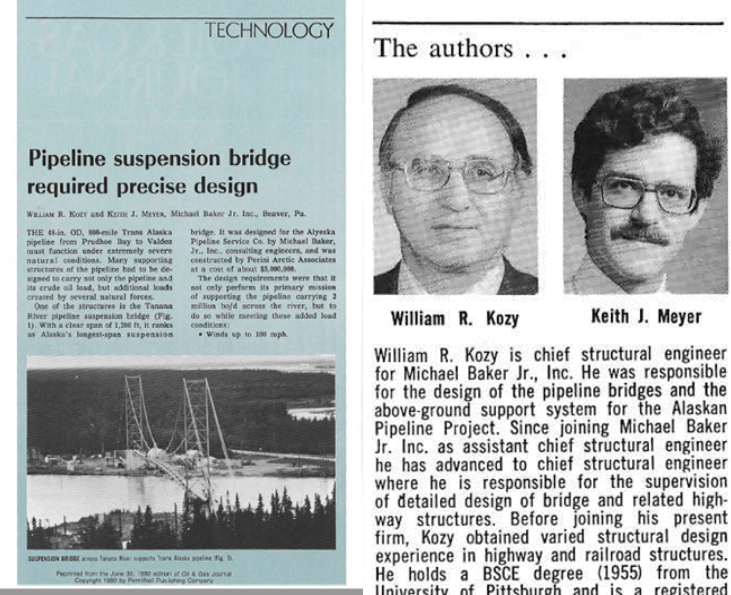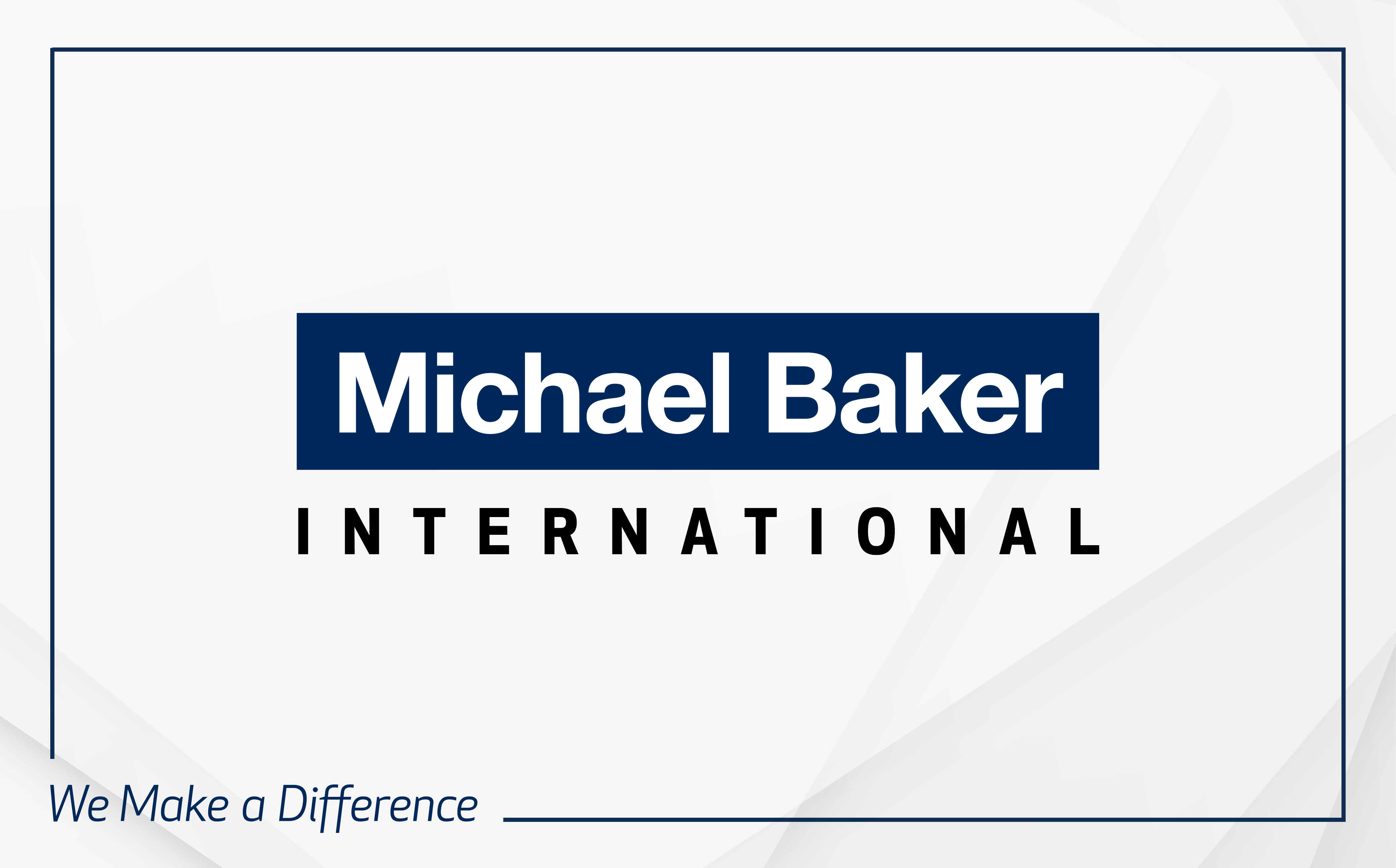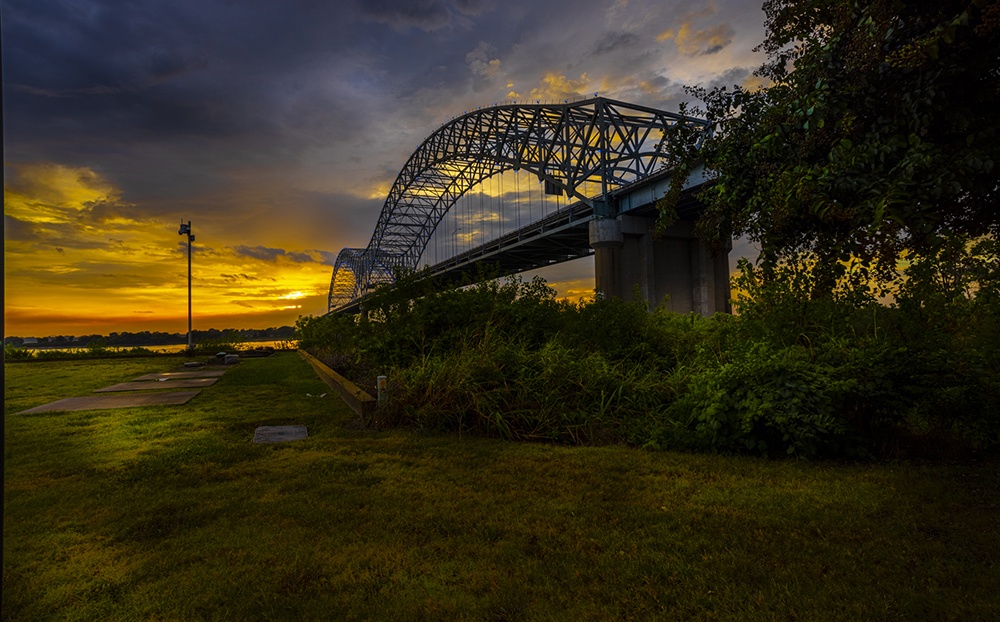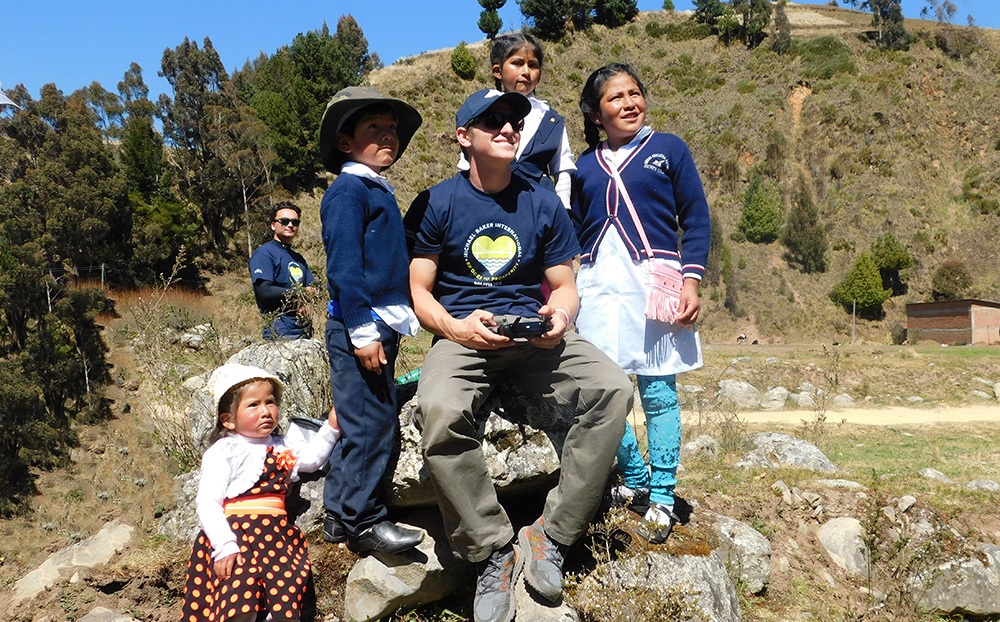As we continue our celebration of Michael Baker International’s founding month, we recognize our employees past, present and future whose commitment to excellence and to Making a Difference will continue to transform the world’s infrastructure for decades to come.
For some employees, Making a Difference has become a family affair. Brian Kozy, Ph.D., P.E., Senior Vice President and National Practice Lead, Bridge, joined Michael Baker in 2020 after 25 years of success in the industry, working in academia, consulting, and public service. In his current role, Brian brings a practical and innovative mindset to solving the nation’s most difficult engineering, construction and asset management challenges in bridges and other highway structures. However, he isn’t the first “Kozy” to become a well-known bridge engineer and lead the bridge practice at Michael Baker.
Brian’s grandfather, William (Bill) Kozy, served as Chief Structural Engineer for Michael Baker from 1970-1984. Bill was at Michael Baker when many iconic bridges were designed, including the Veterans Memorial Bridge in Weirton, West Virginia, the Tanana River Suspension Bridge in Big Delta, Alaska, and the New River Gorge Bridge in Fayetteville, West Virginia.
We sat down with Bill to reflect on his storied career and time at Michael Baker.
How did you get interested in engineering as a profession?
Bill: I had originally declared math as my major in college as I both enjoyed and excelled at it. After a while, though, I realized that in order to make a decent salary and support my growing family, I would need to further my education beyond the bachelor’s degree I currently held and progress to a master’s degree or a PhD. At that time, I noticed that there was a demand for civil engineers, so I switched majors.
What has been the biggest change you’ve seen in bridge engineering throughout your career?
Bill: Without a doubt the biggest change is in the use of computers and engineering software. Sixty years ago, we were using crude calculators and slide rules. Everything took longer and projects were much more labor intensive. However, Michael Baker was always at the cutting edge with writing software for engineering to make the design process faster.
What was your favorite Michael Baker project that you worked on?
Bill: My favorite project at Michael Baker was the Trans-Alaska Pipeline System. It offered many challenges including the weather, earthquakes and rugged terrain. The suspension bridge we designed over the Tanana River and the above ground pipeline support system were the most interesting and challenging. As part of this project, I went to the project site to perform a field inspection and load rating on a truss bridge to allow heavy work trucks to cross. I made the judgement that the bridge was safe to use, and everyone was holding their breath as the first trucks crossed. I was confident in the calculations, and we confirmed the deflections and stresses with survey measurements from the bridge.
What do you think of your grandson following in your footsteps and working at Michael Baker?
Bill: I would never have imagined one of my grandsons working for Michael Baker, but coming up on 40 years later, there he is, in a leadership position for a well-respected company with a great reputation in the engineering field. I am so proud of Brian and all his accomplishments.
We also chatted with Brian about his memories with his grandfather and how their special bond influenced his career.
What are your first memories of your grandfather’s work at Michael Baker?
Brian: When I was just a boy, I can remember seeing artists renderings of bridges that my grandfather designed and hearing him talk about his work. In fact, I remember going to a Christmas open house at the Michael Baker offices and seeing a magic show. They had different engineering things on display, and I was especially interested in a computer simulation that was showing the stress and deflection of a section of ground under a foundation from a finite element analysis. I understood it even though I was probably only 7 or 8 years old at the time.
How did you get interested in engineering as a profession?
Brian: When I began to take courses in college, I was considering Chemical, Mechanical and Civil Engineering. I kept choosing classes that would work for all these majors and delayed my decision as long as possible. Finally, I chose Civil Engineering because this seemed like the broadest field of them all, and civil engineers were building the biggest things that man could build like dams and bridges. Also, I knew about the job from my grandfather.
How did your grandfather’s role at Michael Baker impact your career path?
Brian: I have been blessed beyond belief in my career, and I know that I would never have gotten to where I am if I hadn’t gained exposure to bridge engineering and received guidance throughout my career from my grandfather.





